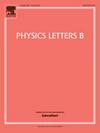利用贝叶斯人工神经网络建立包容性电子-核散射模型
IF 4.5
2区 物理与天体物理
Q1 ASTRONOMY & ASTROPHYSICS
引用次数: 0
摘要
我们介绍了一种基于人工神经网络的贝叶斯协议,它适用于对各种核目标的包容性电子-核散射进行建模,并具有量化的不确定性。与该领域以往直接将截面参数化的应用不同,我们的方法采用人工神经网络来表示纵向和横向响应函数。与取决于传入能量、散射角和能量转移的横截面不同,响应函数仅由系统的能量和动量转移决定,因此可以对角度分量进行分析处理。我们根据准弹性包容电子散射数据库中的大量数据,评估了我们框架的准确性和预测能力。此外,我们还提出了纵向和横向响应函数的新提取方法,并将其与之前的实验分析和核模拟计算进行了比较。本文章由计算机程序翻译,如有差异,请以英文原文为准。
Modeling inclusive electron-nucleus scattering with Bayesian artificial neural networks
We introduce a Bayesian protocol based on artificial neural networks that is suitable for modeling inclusive electron-nucleus scattering on a variety of nuclear targets with quantified uncertainties. Unlike previous applications in the field, which directly parameterize the cross sections, our approach employs artificial neural networks to represent the longitudinal and transverse response functions. In contrast to cross sections, which depend on the incoming energy, scattering angle, and energy transfer, the response functions are determined solely by the energy and momentum transfer to the system, allowing the angular component to be treated analytically. We assess the accuracy and predictive power of our framework against the extensive data in the quasielastic inclusive electron-scattering database. Additionally, we present novel extractions of the longitudinal and transverse response functions and compare them with previous experimental analysis and nuclear ab-initio calculations.
求助全文
通过发布文献求助,成功后即可免费获取论文全文。
去求助
来源期刊

Physics Letters B
物理-物理:综合
CiteScore
9.10
自引率
6.80%
发文量
647
审稿时长
3 months
期刊介绍:
Physics Letters B ensures the rapid publication of important new results in particle physics, nuclear physics and cosmology. Specialized editors are responsible for contributions in experimental nuclear physics, theoretical nuclear physics, experimental high-energy physics, theoretical high-energy physics, and astrophysics.
 求助内容:
求助内容: 应助结果提醒方式:
应助结果提醒方式:


